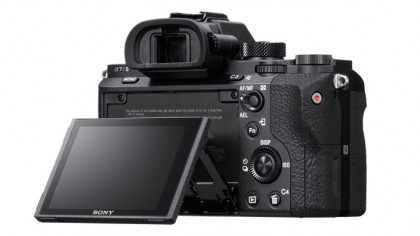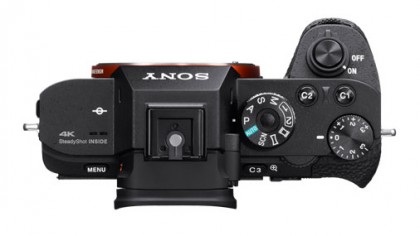Why you can trust TechRadar
Like the A7 II and A7R II, the new A7S II feels well made and is comfortable to hold, with most controls being within easy reach. The new camera is tougher than the original model, with more magnesium alloy and a reinforced lens mount. It's also weatherproof, although you need to watch out for rain droplets getting onto the viewfinder sensor and switching off the rear screen when you don't want it to.
In response to criticisms of the design of the original A7, A7R and A7S, Sony has made changes to the Mark II versions. These include making the grip bigger, moving the shutter release forward on to the top of the grip and changing the rear barrel-like dial to a more standard, semi-recessed type dial.
Unfortunately the video record button is still on the corner of the thumb-grip on the back of the camera and it's awkward to locate and press when holding the camera. Thankfully there are plenty of customisation options so it can be set to another button. Those who want to use the A7S II primarily for stills may find one of the two customisation buttons on the top-plate a good choice, while dedicated videographers may prefer to use the large button on the back of the camera at the centre of control dial and navigation pad. This button makes a good choice for accessing the focus point setting mode for stills shooters.


While the customisation options available are generally very good, there are some frustrations, as the list of available functions varies a little between the buttons. Metering mode, for instance, can be assigned to any of the navigation buttons and Custom buttons 2, 3 and 4, but not Custom button 1. The rear dial also provides a convenient means of scrolling through the huge sensitivity range quickly, but the right navigation button is actually marked ISO.
The main menu layout is largely the same as the A7R Mark II's and it could be improved by the presence of a customisable screen as well as greater separation of the video and stills options. Similarly, while it's great to have a customisable Function menu, it would be helpful to have two; one for stills and one for video.

It would also be nice to have a more direct route to the autofocus points with a mini joystick controller like on the Canon 5D Mark II and Canon 5DS or a dedicated pad like on cameras like the Nikon D7200 and D810.
Sony's XGA OLED Tru-Finder is excellent and there's no trace of smudging or stutter when panning to follow a moving subject. It provides an impressive view when composing images with the camera held to your eye, with a shimmer of noise in low light. As most professional video shooters will focus manually with the A7S II, it's especially helpful that it enables the image to be magnified to check sharpness even when shooting - something that competing cameras like the Panasonic GH4 can't. The only odd thing is that the magnification isn't as clear in video mode as when shooting stills.
Sign up for breaking news, reviews, opinion, top tech deals, and more.
Further good news is that its preview in the viewfinder and on the screen is a good match for the captured image.
Current page: Build and handling
Prev Page Introduction and features Next Page Performance: stills and video quality